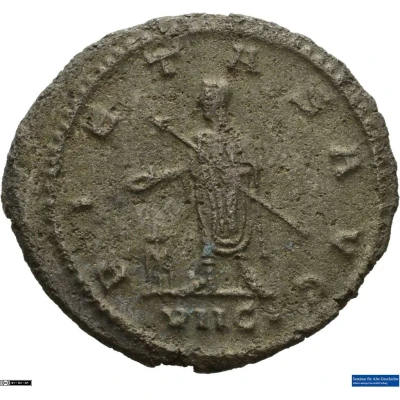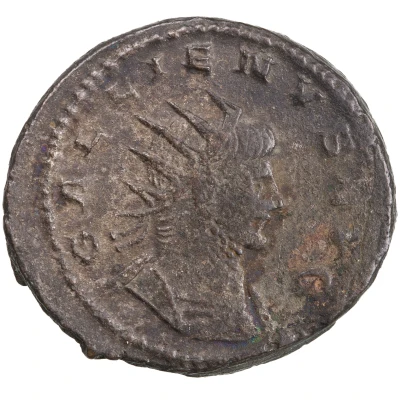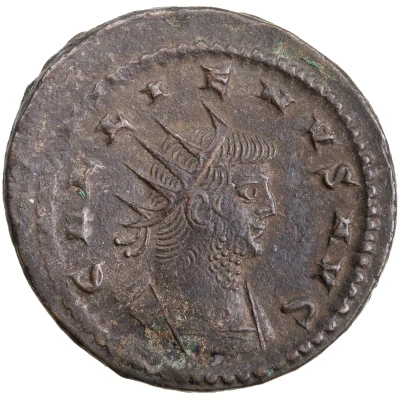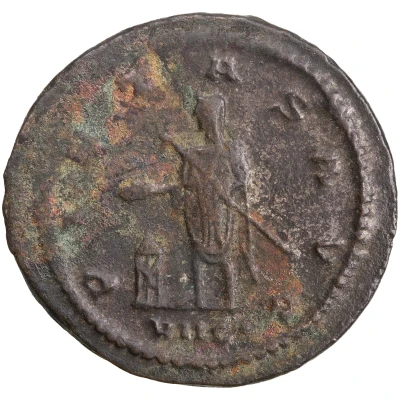


© Münzsammlung des Seminars für Alte Geschichte, Albert-Ludwigs-Universität Freiburg (CC BY-NC-SA 3.0 DE)
Antoninianus - Gallienus PIETAS AVG
| Silver | 3.8 g | 21.5 mm |
| Issuer | Rome › Roman Empire (27 BC - 395 AD) |
|---|---|
| Emperor | Gallienus (Publius Licinius Egnatius Gallienus) (253-268) |
| Type | Standard circulation coin |
| Years | 266-268 |
| Value | Antoninianus (1) |
| Currency | Antoninianus, Reform of Caracalla (AD 215 – 301) |
| Composition | Silver |
| Weight | 3.8 g |
| Diameter | 21.5 mm |
| Shape | Round (irregular) |
| Technique | Hammered |
| Demonetized | Yes |
| Updated | 2024-10-05 |
| Numista | N#289414 |
|---|---|
| Rarity index | 97% |
Reverse
Gallienus, togate, standing left, sacrificing out of patera held in right hand over tripod and holding spear or sceptre in left hand. Officina mark in exergue.
Script: Latin
Lettering:
PIETAS AVG
VIIC
Translation:
Pietas Augusti.
Piety of the emperor (Augustus).
Comment
Mass varies: 3.58–4.06 g;Diameter varies: 21–22 mm;
Example of this type:
Münzsammlung des Seminars für Alte Geschichte, Albert-Ludwigs-Universität Freiburg
Source:
Online Coins of the Roman Empire (OCRE)
Interesting fact
The Antoninianus coin, which was issued during the reign of Gallienus (266-268 AD), was a significant departure from previous Roman coins in terms of its design and metal content. It was the first Roman coin to feature a radiate crown on the emperor's head, which symbolized the power and authority of the emperor. Additionally, the coin was made of silver, which was a departure from the traditional bronze or copper used in previous coins. This change in metal content was likely due to the economic pressures of the time, as the Roman Empire was facing significant inflation and currency devaluation. Overall, the Antoninianus coin represents an important milestone in the development of Roman currency and is a valuable piece of history for collectors and historians.



